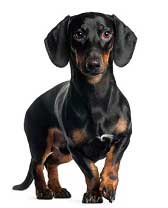The Labrador Retriever is popularly believed to originate in the coast of Newfoundland, where fishermen have been seen using dogs of similar appearance as helpers during fishing. Specifically, the San Juan water dog is pointed out as the main origin of the Labrador when mixing with various working breeds.
An excellent water dog, a fact that stands out not only for its taste for this liquid, but for its water-resistant coat and its characteristic tail, similar to that of an otter due to its shape, which they further emphasize this trait so desired by the fishermen of the time.
The Labrador is not a very ancient breed. The Breed Club was formed in 1916 and the Yellow Labrador Club was founded in 1925, although the first written reference to the Labrador dates back to 1814. It was in field trials that the Labrador found its early fame, being originally introduced to these shores. late 1800s by Col Peter Hawker and the Earl of Malmesbury. It was a dog named Malmesbury Tramp , described by Lorna, Countess of Howe as one of the "roots" of the modern Labrador.
Its gentle nature makes the Labrador Retriever an excellent dog for the whole family, although its large appetite and active nature, especially in its early years, make it a must have Be careful what you put in your mouth.
Ask for a free quote at Petplan from less than 1€ per day.








.png)
.png)

































